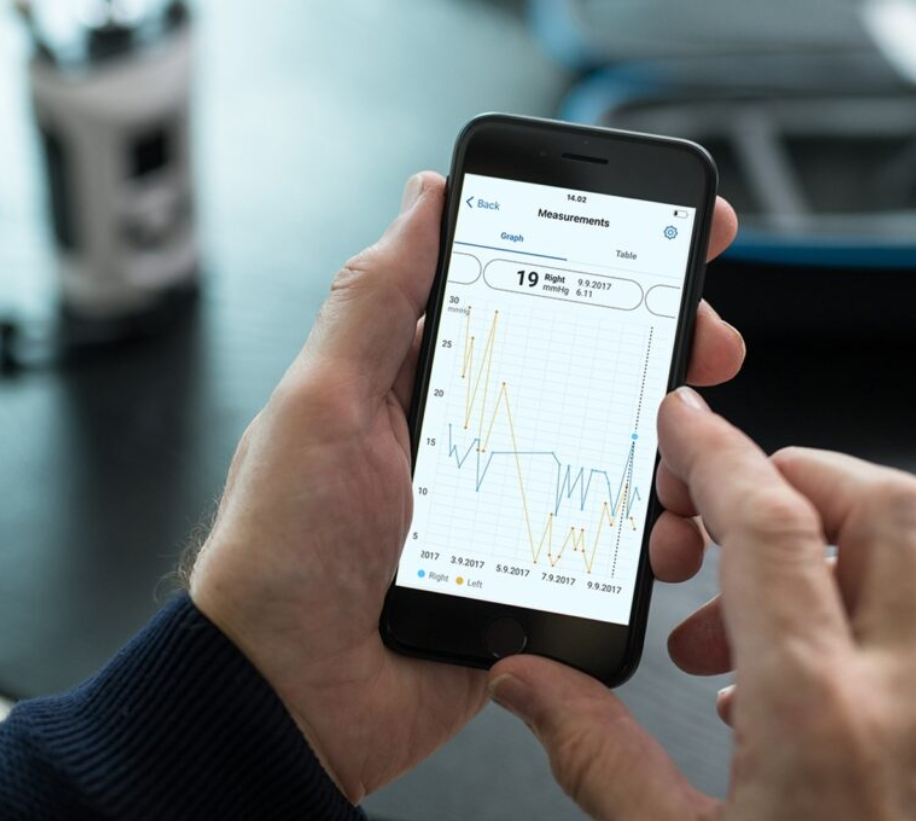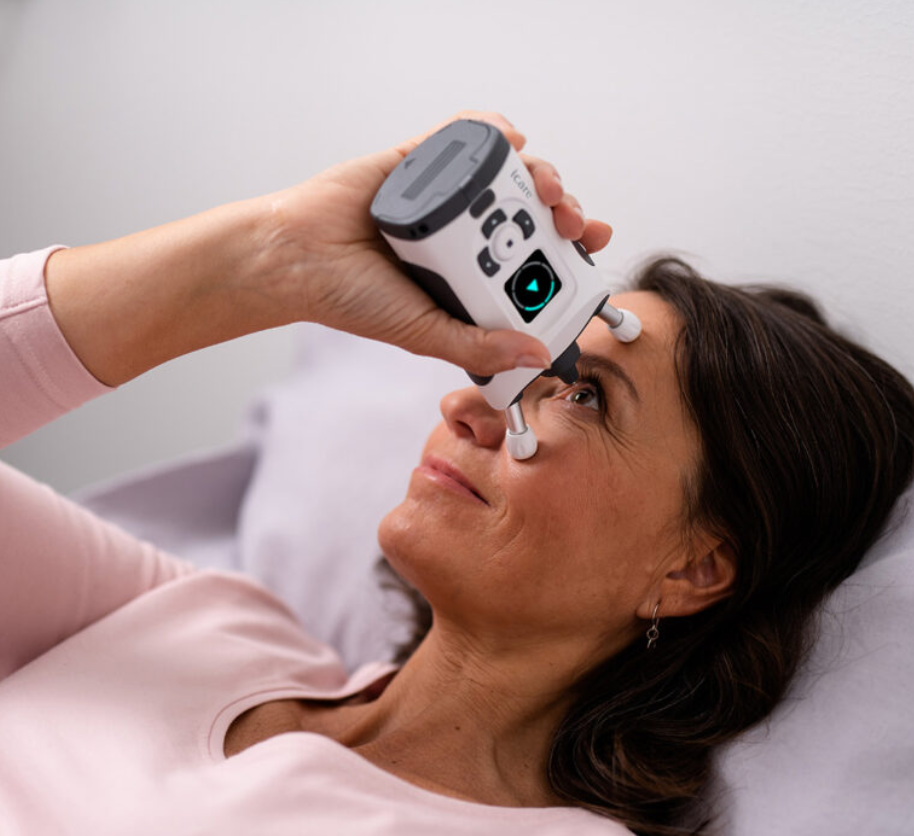Icare® AMS: Automatic measuring sequence: series and single mode with one button Icare® EyeSmart: Automatic OD/OS recognition technology Icare® EasyPos: Intelligent positioning assistant for the correct alignment of the tonometer
11cm x 8cm x 3cm 150 g
@ Icare® HOME tonometer——IOP self-monitoring anywhere, anytime
Icare® HOME tonometer is designed for home use for Glaucoma Patients or suspects, who need regular IOP monitoring by Ophthalmologists recommendation.
Icare® HOME enables IOP monitoring anywhere and anytime, and it is one of the first methods for 24h IOP monitoring outside the clinic.
The new concept with continuous monitoring provides more information to the Ophthalmologist and comfort for the patient. Also, the clinic efficiency can be improved.
The device is based on a rebound measuring principle that requires no drops, air or specialized skills for its use.

Key Features:
Icare® AMS:
Automatic measuring sequence:
series and single mode with one button
Icare® EyeSmart:
Automatic OD/OS recognition technology
Icare® EasyPos:
Intelligent positioning assistant for the correct alignment of the tonometer
The iCare HOME2 tonometer for patient use provides easy and accurate IOP self-measurement to improve the ongoing management of glaucoma.
Glaucoma suspects and patients can measure their IOP using the HOME2 tonometer during normal activities as directed by their doctor. The iCare PATIENT2 mobile app provides the patient a graphical view of their IOP measurements history which can increase compliance with their treatment plan and follow up appointments. The IOP measurement results are easily shared with the doctor.
Patients can store their iCare HOME2 measurement data in a private account in the iCare CLOUD service or in their healthcare professional’s iCare CLINIC account.

However, it should be noted that:
Intraocular pressure measurement taken by this device at home is not a substitute for measurements obtained within an eye care clinic.
Normal and low intraocular pressures do not mean that someone does not have glaucoma. A large proportion of patients with glaucoma and glaucoma suspects in Australia have pressures in the normal range. Many people with glaucoma have never had high intraocular pressure readings.
Intraocular pressure is only one factor in glaucoma assessment and needs to be interpreted alongside all other aspects of the clinical examination.
Intraocular pressure measurements may fluctuate throughout the day, even in people without glaucoma and the results need to be interpreted by an eye care practitioner.